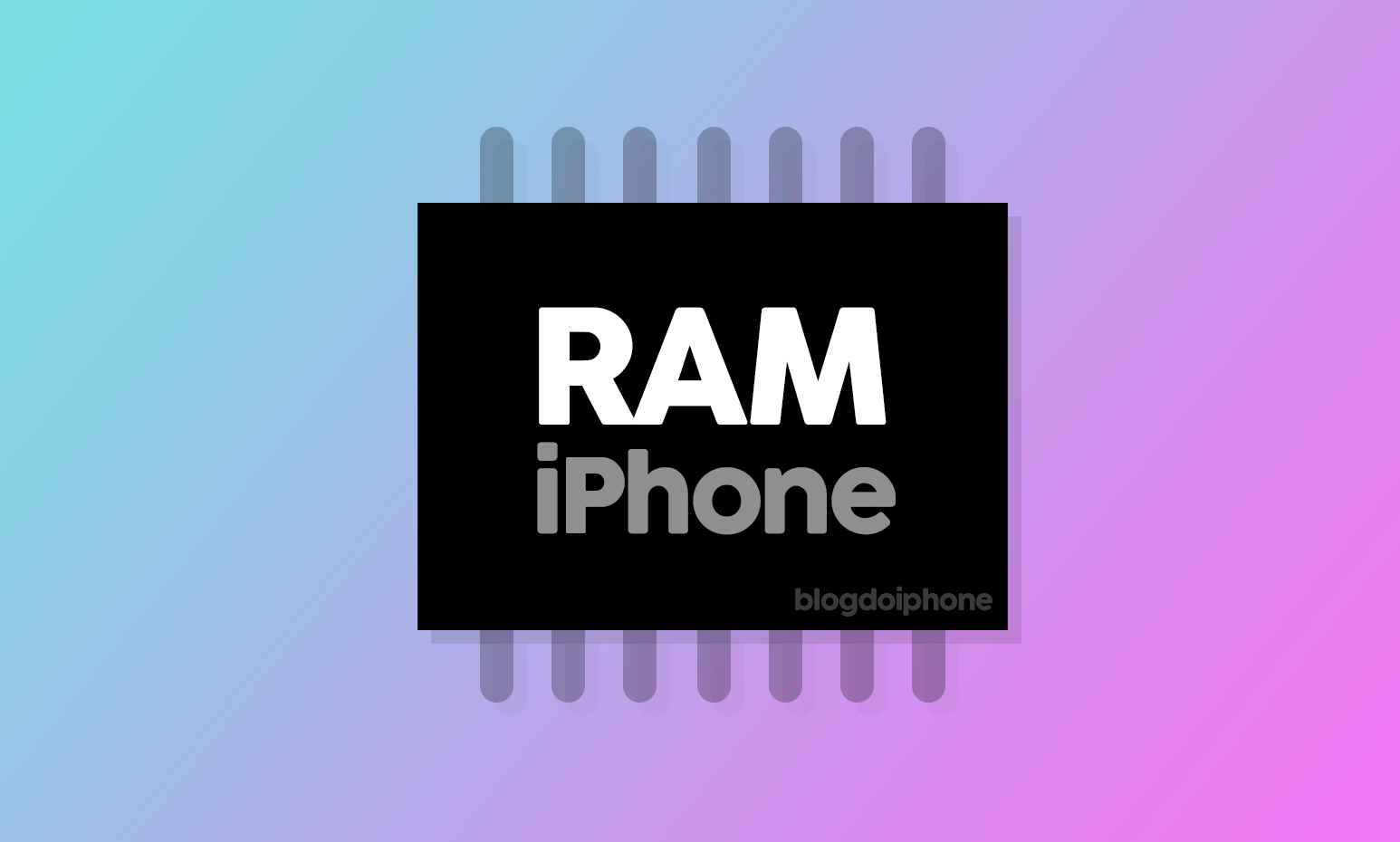
How much RAM does the iPhone have?
The RAM memory in an electronic device (like the iPhone) is the virtual space where apps run. Therefore, the bigger it is, the more things the system can do, and with greater speed.
When looking for a new iPhone to buy, many users specifically worry about this detail to understand how performative the device can be.
But then comes the question: How (and where) can I see the RAM memory of a specific iPhone?
This article aims to clarify this doubt.
How to see the RAM memory of the iPhone?
Apple does not disclose anywhere the amount of memory that each iPhone has. This is because they consider that the average user does not need to know this; what matters to them is whether the device works well on a day-to-day basis or not.
For this reason, you will not find the amount of RAM that your iPhone has anywhere in the system. In Settings, this information simply does not exist.
But fortunately, there are companies that disassemble the devices and tell us this information. With that, it is possible to know how much RAM each iPhone model has.
How much RAM memory does the iPhone have?
We have compiled a complete list of all iPhone models ever released and the amount of RAM memory each one has.
Check it out:
-
- iPhone (2007) RAM: 128 MB (LPDDR)
- iPhone 3G RAM: 128 MB (LPDDR)
- iPhone 3GS RAM: 256 MB (LPDDR)
- iPhone 4 RAM: 512 MB (LPDDR)
- iPhone 4S RAM: 512 MB (LPDDR2)
- iPhone 5 RAM: 1 GB (LPDDR2)
- iPhone 5c RAM: 1 GB (LPDDR2)
- iPhone 5s RAM: 1 GB (LPDDR3)
- iPhone 6 RAM: 1 GB (LPDDR3)
- iPhone 6 Plus RAM: 1 GB (LPDDR3)
- iPhone 6s RAM: 2 GB (LPDDR4)
- iPhone 6s Plus RAM: 2 GB (LPDDR4)
- iPhone SE 1 (2016) RAM: 2 GB (LPDDR4)
- iPhone 7 RAM: 2 GB (LPDDR4)
- iPhone 7 Plus RAM: 3 GB (LPDDR4)
- iPhone 8 RAM: 2 GB (LPDDR4X)
- iPhone 8 Plus RAM: 3 GB (LPDDR4X)
- iPhone X RAM RAM: 2 GB (LPDDR4X)
- iPhone XS RAM RAM: 4 GB (LPDDR4X)
- iPhone XS Max RAM: 4 GB (LPDDR4X)
- iPhone XR RAM: 3 GB (LPDDR4X)
- iPhone 11 RAM: 4 GB (LPDDR4X)
- iPhone 11 Pro RAM: 4 GB (LPDDR4X)
- iPhone 11 Pro Max RAM: 4 GB (LPDDR4X)
- iPhone SE 2 (2020) RAM: 3 GB (LPDDR4X)
- iPhone 12 RAM: 4 GB (LPDDR4X)
- iPhone 12 mini RAM: 4 GB (LPDDR4X)
- iPhone 12 Pro RAM: 6 GB (LPDDR4X)
- iPhone 12 Pro Max RAM: 6 GB (LPDDR4X)
- iPhone 13 RAM: 4 GB (LPDDR4X)
- iPhone 13 mini RAM: 4 GB (LPDDR4X)
- iPhone 13 Pro RAM: 6 GB (LPDDR4X)
- iPhone 13 Pro Max RAM: 6 GB (LPDDR4X)
- iPhone SE 3 (2022) RAM: 4 GB (LPDDR4X)
- iPhone 14 RAM: 6 GB (LPDDR4X)
- iPhone 14 Plus RAM: 6 GB (LPDDR4X)
- iPhone 14 Pro RAM: 6 GB (LPDDR5)
- iPhone 14 Pro Max RAM: 6 GB (LPDDR5)
It’s worth noting that not only the quantity, but also the type of RAM memory influences performance, energy consumption, and transfer speed.
That’s why we’ve included this information in the list above.
What is RAM memory for?
RAM stands for Random Access Memory, which describes its function: a temporary memory where files are written and read while applications are running.
This way, programs don’t need to constantly access the internal disk, keeping everything they need in RAM, immediately available to perform their tasks faster.
So, RAM serves to make programs run faster than they would if they had to access the internal disk every time they needed data.
RAM memory vs. Internal storage
It’s a common mistake for many people to confuse RAM memory with the internal storage of the device. But they are very different things!
What we’re talking about in this article specifically refers to RAM, which is the space where applications are executed. It’s a temporary memory that is emptied every time the device is restarted or an application is closed.
Different from that is the internal disk space, which is where all files are properly registered and remain even when the iPhone is turned off. The larger its capacity, the more files, applications, music, and photos can be stored.
So keep these differences in mind so you don’t get confused when choosing your model.
Should I worry about the RAM of the iPhone?
In general, you shouldn’t worry too much about it. The integration of the iPhone with iOS allows the system to make the most of the hardware, providing maximum performance.
Just as more RAM allows you to run more applications at the same time, this also comes with a cost: increased battery consumption. So, increasing memory doesn’t always mean the best solution.
Apple strives to make users not need to know the technical specifications of their devices because what matters is that everything runs smoothly. And it achieves this because it manufactures both the hardware and the software.
So don’t stress too much about the quantity. Focus on the other features of the device that meet your needs. 😉